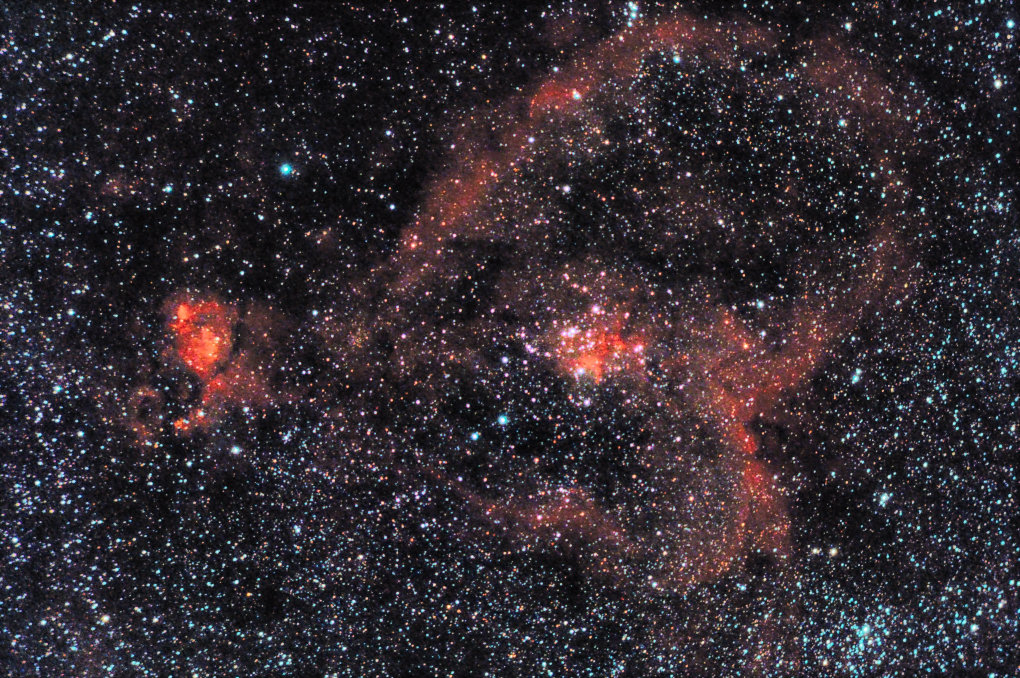
Mostafa
-
Posts
14 -
Joined
-
Last visited
Content Type
Profiles
Forums
Gallery
Events
Blogs
Posts posted by Mostafa
-
-
1 hour ago, Kyle Allen said:
Have a look at what people have done with the same setup on AstroBin:
https://www.astrobin.com/search/?q=Star+adventurer+evostar+72ed
Why are you buying a 3x Barlow Lens?
I’m buying the Barlow lens so I can magnify smaller targets. Will it fit in with the setup?
-
-
1 hour ago, scitmon said:
If you mean in terms of field of view, then this site can help you with that: http://astronomy.tools/calculators/field_of_view/
Select imaging mode tab, use "custom scope" then adjust the focal length field accordingly. The canon 2000d isn't an option either, but if you select the 1000d which will have the same chip size that will give you an accurate representation. Here is what M31 would look like at 300mm:
That is how it would be framed, but in terms of detail etc, that depends on your exposure length and how many images you stack together.
Thank you.
-
I’m looking to get started in Astrophotography. What images can I expect to get with this setup?...
Canon 2000d
Canon 75-300mm telephoto lens
Sky watcher star adventurer pro
Dew heater band
Sky watcher tripod
Thank you
-
On 16/07/2020 at 16:44, almcl said:
Why are the edges warped? And the stars an unnatural colour? Is this from the telescopes or processing?
-
5 hours ago, malc-c said:
Can you advise us what make and model the mount is as some will be better than others. It's really difficult to advise when we have no idea on how capable the mount and motor drive is
But if the motor on the RA axis is designed to work with the mount you have then it should provide good enough tracking for wide angle shots with your camera and lens. Provided you can polar align the mount well there would be little to no tracking errors in a wide field image. It's only when you start using long focal length lenses or telescopes that the alignment becomes critical, and limits the exposure duration before guiding is needed in order to prevent star tailing.
It is a Saxon eq1 mount with tripod and Saxon eq1 ra motor drive, made for each other.
-
Ok, thank you. So am I able to start imaging with just an equatorial mount and ra motor drive?
-
6 hours ago, pete_l said:
Here are some examples of what others have produced with an ST80. You will have to check the images to see which are from a DSLR.
Thank you very much.
-
5 hours ago, almcl said:
Thanks.
-
2 hours ago, malc-c said:
What mount do you have.... given that most DSO need stacked long exposures the mount is probably just as much, if not more important than the scope used.
The computerised GOTO mounts are too expensive, so I decided to improvise and an equatorial mount with just an RA motor drive.
-
Also, are the pictures in the simulation stacked and processed or not?
Again thanks,
-
Thank you very much!
But my goal is to use a DSLR instead of eyepieces. I am trying to go for Astrophotography.
-
What do dso’s look like through st80?











.png.882d3931b9ed3a002eae65f15c4c36c2.png)

What images can I expect to get from this setup?
in Getting Started With Imaging
Posted
I was wondering what images of dso I could get with this setup. How and how much would my images improve if I added in a decent file flattened and what would happen if I exceeded the maximum telescope magnification with Barlow lens.